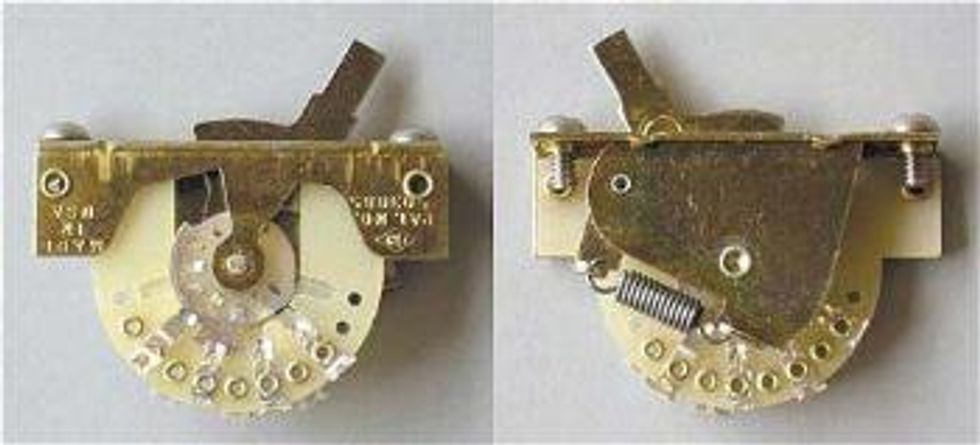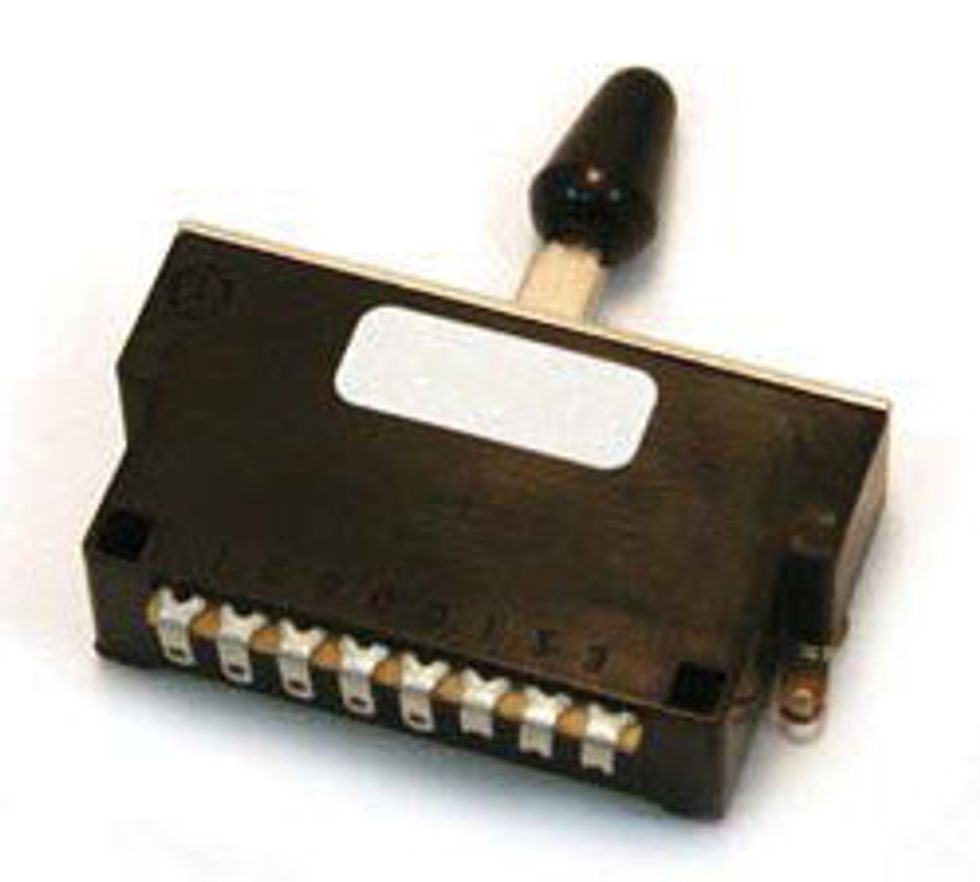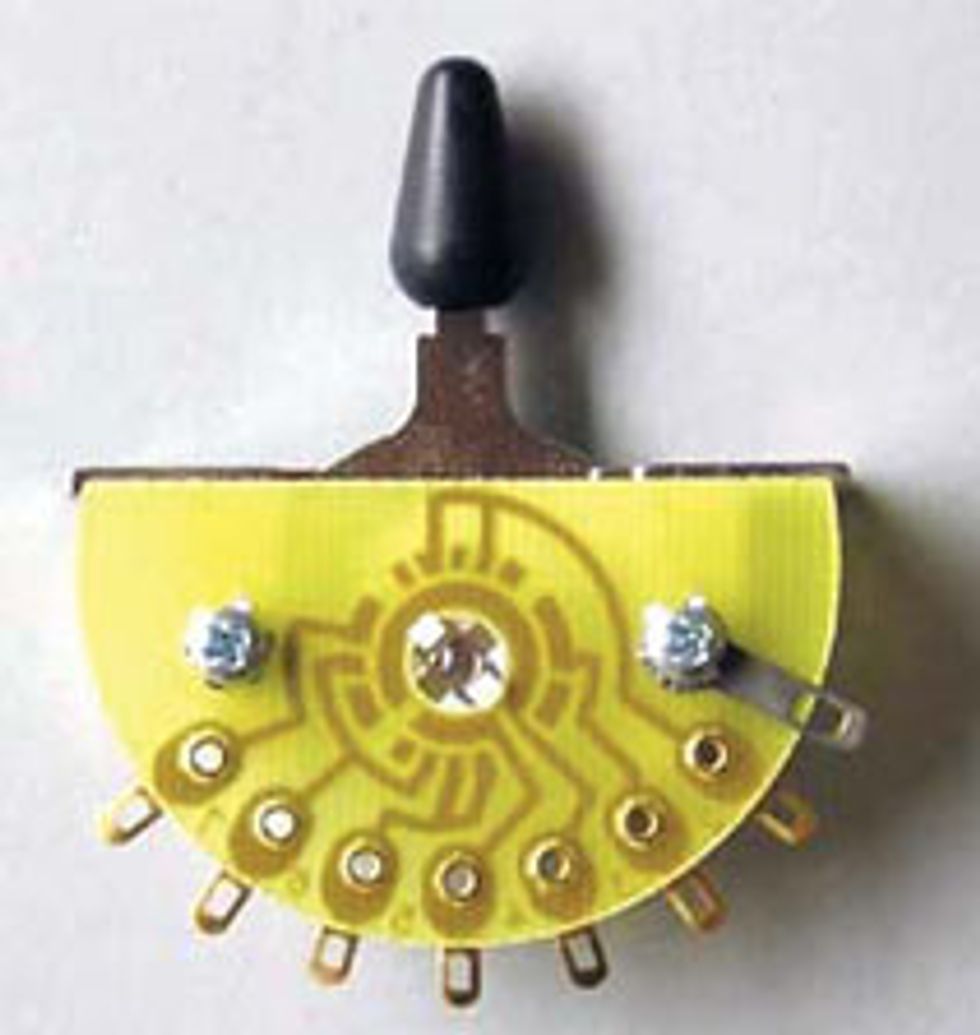A primer on the Strat 5-way switch
| Next Installments: Part II Part III |
Part I: The Basics
Hello and welcome back to “Mod Garage." I hope you all enjoyed your holidays. This month, we'll start to talk about the anatomy of the Stratocaster 5-way pickup selector switch. I know some of you may not find this topic completely fascinating, but believe me: it's important to understand the basics of this switch, and it's not as difficult as you might think. You'll see at the end that you'll be able to develop your own mods with this knowledge, and it will help you further your understanding of all kinds of guitar wirings in general.
I'll split this treatment into three pieces: this month we'll talk about the basics of the switch, and over the next two months I'll show you how to install a switch, and discuss its individual lugs and how to transfer these basics to other switches. So put on your white lab coat and pull out your dissecting case, and we'll start.
First of all, as you know there are several companies producing guitar switches, such as Central Lab (CRL), OAK/Grigsby (acquired by Electroswitch), Neutrik, Schaller, Eyb and Stewmac, just to name a few. And you may know from experience with other types of products, these switches are all different, even though they all do the same thing! We have to set a standard before we start, so I've decided to use the Central Lab (CRL) switch. It's the most common switch of this type around the world, and you can see this switch configuration on almost all kinds of wiring diagrams (Seymour Duncan also uses it as the standard).
You can divide all these switches into two main groups: closed ones and open ones. The open switches, like the CRL, Stewmac and OAK, offer very good quality—plus the benefit of seeing what the switch is doing in certain positions makes it much easier to understand.
Here you can see the classic CRL 5-way switch from both sides.
For comparison, here a closed 5-way budget switch from the far-east.
Some switches, like the Eyb or the Schaller, fall somewhere between the two main types, offering an open PCB-based construction, like the one shown above.
There is a never-ending debate about which switch is the best. Some prefer the open ones; others the closed ones. As for myself, I can only say that I've never had a problem with an open switch, but I've seen and serviced countless guitars with faulty and noisy closed switches. One argument you can read frequently is that the closed switches offer protection against dust, humidity and moisture. This may be true, but is it an important factor? Have a look at your Strat. The switch is mounted underneath the pickguard—an area already protected against dust and moisture. I have never seen a rusty or dusty open switch on a Strat pickguard. The best way to pamper your switches (both closed and open) to protect them from dust and debris is to use them often. This will keep all the contacts clean, and will assure years of trouble-free operation.
There are also people who maintain that the open switches sound different from the closed ones. I've never heard a difference, but maybe it's just my ears. If you can hear the difference, you should certainly experiment with different switches to fine-tune your tone. Personally, I use the open CRL and OAK switches in all of my guitars, and they've never let me down.
Next month we'll continue on to installing a new 5-way switch, and talk about its single lugs. So stay tuned and keep on modding!
Dirk Wacker
Dirk Wacker lives in Germany and has been addicted to all kinds of
guitars since the age of five. He is fascinated by anything that has
something to do with old Fender guitars and amps. He hates short scales
and Telecaster neck pickups, but loves twang. In his spare time he
plays country, rockabilly, surf and Nashville styles in two bands,
works as a studio musician for a local studio and writes for several
guitar mags. He is also a confessing hardcore DIY guy for guitars, amps
and stompboxes and runs an extensive webpage singlecoil.com about these things.




